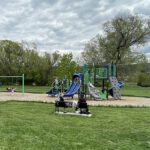Home »

Report on Indigenous child welfare delivered
A final report from the Ministry of Children and Family Development’s special advisor provides 85 recommendations to overhaul British Columbia’s Indigenous child welfare system and improve outcomes for Indigenous children and youth by changing focus from intervention and separation to strengthening families.
Grand Chief Edward John’s final report, Indigenous Resilience, Connectedness and Reunification – From Root Causes to Root Solutions, summarizes his activities and engagement over the past year and provides a detailed analysis of Indigenous child protection in B.C.
The report’s 85 recommendations are themed to focus on several key areas. They include: reducing the need for Indigenous children and youth to come into care; increasing support services that help keep families together; enabling greater access to judicial services; creating a more equitable funding formula between the province and the federal government; increasing early intervention services; and, specifically targeting more Ministry of Children and Family Development (MCFD) staff within First Nations communities.
The recommendations are directed variously to MCFD, B.C.’s delegated Aboriginal agencies (DAAs), First Nations leadership and the federal government.
Of the recommendations directed at MCFD, work on 40 of them is either being wrapped into the ministry’s multi-year operations plan or is currently underway, the Ministry of Children and Family Development reported today.
Addressing the remaining recommendations from Grand Chief John’s report will require a significant injection of funding – often in co-ordination with the federal government. Alterations will also need to be made to existing legislation. Ultimately, this report demands a shift in practice and a broader reassessment of how MCFD and DAAs engage with the federal government and with Indigenous communities to mitigate and address Indigenous child welfare concerns.
“We will not see the desired change without strong and sustained leadership and action by Canada, B.C. and Indigenous parents and communities. I know the willingness is there and I hope that this report helps advance an understanding of the steps required to both address the root causes of the existing ills of the child welfare system and practices, and work with Indigenous peoples to support root solutions,” said report author Chief John, who was appointed to the special advisor position in September 2015 with a mandate to: engage with Aboriginal, First Nation and Metis communities on permanency discussions; review policy and legislation within the ministry to find ways to improve the overrepresentation of Indigenous children in care; and provide Early Years advice to the minister.
His initial term was set to end March 31, 2016, but was extended to allow for a more thorough consultation process. In his role as senior advisor, Grand Chief John met with 86 First Nations, 10 Delegated Aboriginal Agencies and 12 organizations or interest groups over a 14-month span.

“I want to thank Grand Chief Ed John for his thoughtful, heartfelt, and comprehensive report. Right now, Indigenous children are 15 times more likely than others to be in foster care – that must change, and it will. Chief John’s recommendations mean systemic, wide-scale change, and a shift in thinking from intervention to protecting families. We can’t do it alone, and it can’t happen overnight, but it must happen. We are committed to working with our federal, provincial and First Nations partners to do what is necessary to give Indigenous families better supports and help create a brighter future for their kids,” stated Premier Christy Clark.
Stephanie Cadieux, Minister of Children and Family Development added: “We don’t accept the over-representation of Indigenous children in government care as a simple matter of course. That’s why we brought in Grand Chief John to undertake this work and help us improve our child and family-supporting system. His report gives us the basis on which to advance our efforts and expand them with support from the federal government and working hand-in-hand with B.C.’s Indigenous communities and leadership.”
Though the number Indigenous children and youth in government care has declined by 21% since 2007 (from 63.6 to 55.3 per 1,000 Indigenous 0-18 year olds), the trend for non-Indigenous children in care numbers is even stronger – a 45% decline over the same time frame. Consequently, Indigenous children and youth represent 61.2% of all children and youth in government care in British Columbia, the MCFD reported.
Evidence shows that, where it is safe and appropriate to do so, keeping families together rather than placing a child into care results in better outcomes overall for these children. Increasingly, MCFD’s practice has emphasized family preservation, keeping Aboriginal children and youth from coming into government care.
In circumstances where a child needs to be placed in care, evidence stresses the importance of finding permanency through either reunification with parents, adoption or permanent transfer of guardianship to another caring adult or adults.
When permanency is being planned for Indigenous children or youth, the child or youth’s Indigenous community must be involved. The priority is always for an Indigenous child or youth to be placed with family, extended family or clan, or a family that is part of the same community or nation, the MCFD said.
Lead image: Grand Chief Edward John of the Tl’azt’en Nation. UN News Centre image
e-KNOW







